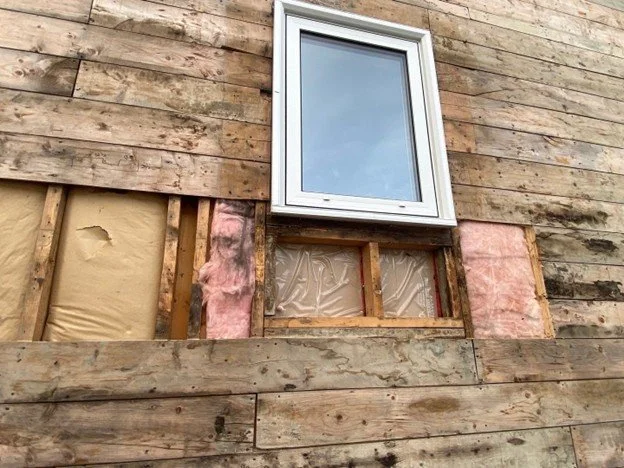Why Is My Older Home So Cold?
Baby, it’s cold outside… or is it cold inside?
If you live in an older Edmonton area home, from November to April it probably IS cold inside. Obviously, we all expect to be cold when we go outside in the wintertime, so we prepare ourselves with long underwear, good boots, and a thermos full of something warm. But no matter how much we prepare for the cold, we still want to go inside to warm up after a while.
So where do you go to warm up if the walls of your home are so thin that you can literally feel a chill blowing in with every gust of wind? If this sounds familiar, it might be time for new siding and exterior insulation.
You might be asking yourself: how does new siding with a thin layer of foam insulation make such a difference? There are three main factors at work, specific to older homes:
1. Thinner wall = less insulation
In older homes with 2x4 framing, the builders could naturally only install . On average, older 2x4 fiberglass insulation is good for an insulation value of R11. (R Value is a measurement for insulation – new home building code in Alberta requires an effective R22 for exterior walls.)
2. More studs in the wall = less insulation
Remember above how old fiberglass insulation is good for R11? Well, that only applies to the fiberglass insulation, NOT the wood studs that hold up your walls and roof.
Here’s a photo from when we removed some rotten planking on this late 1950s bungalow in central Edmonton. Notice the unnecessary extra to the left, and below the window! This means less insulation, and a colder room.
When accounting for all the wood framing in the wall cavity, the average R-value of an older home in Edmonton can be as low as R10, with colder spots wherever the wall is over framed.
3. Poorly sealed walls
Almost all homes built before the late 1990s used heavy tar paper as a waterproof layer under the siding or stucco. Tar paper does a good job of keeping out water when installed perfectly, but it’s lousy when it comes to air sealing. Older homes wrapped with tar paper are constantly losing warm air to the outside through gaps in the exterior.
How we can help:
Most of our clients that add exterior insulation to their homes add somewhere between R5 to R12 to the walls. This means walls that are 50% to 120% more insulated than before! When we remove the old siding or stucco, we also remove the old tar paper, and wrap the home with Tyvek DrainWrap, which makes for an effective air barrier. A better air barrier means less air leakage, and warmer rooms.
Not sure if exterior insulation is worth it?
Check out these comments from a few of our past clients:
“The cold spots and drafts have been eliminated.
“We no longer have ice build up in the corner of our master bedroom closet during -30C cold snaps.”
“Overall, the drafty cold rooms are now about the same temp as others on their respective floors. The insulation was a huge difference.”
“For older homes adding this layer of insulation is a must.”
If you live in an older, colder home that needs new siding anyway, why not take care of two problems at once? Give us a call at (780) 850-2602, or use the form below to set an appointment for a free consultation.

